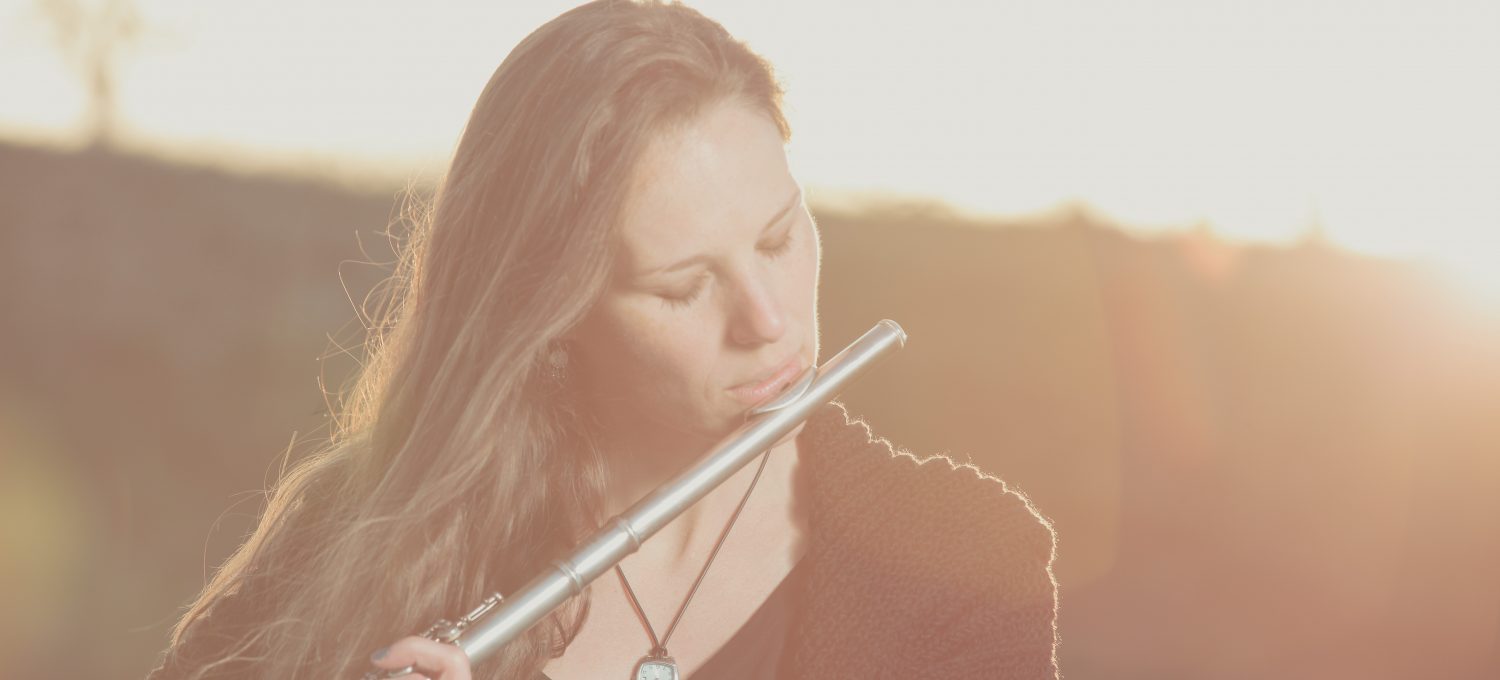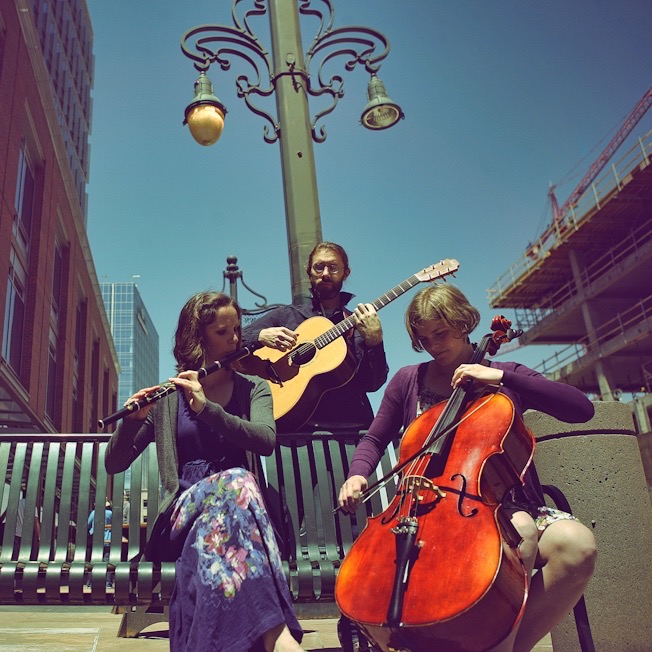Tell us about your background. How did you come to music as a career?
I fell in love with the flute when I was eight, and band class became one of my favorite times of the school day. I am very lucky to have parents who love music and who made it a priority to find encouraging and open-minded teachers to guide me through as much music as I could study. By the time I was 15, I was working through Cecile Chaminade’s Concertino and I was blown away by the creative expression and technical, mathematical precision required to play it. This juxtaposition of creative and analytical thought completely hooked me (it still does to this day), and I decided right then and there that I was going to be a professional musician. It was unthinkable to me at the time that I would do anything else, so I applied to college, I got in, and I just kept going. Since then I’ve studied, taught, and performed in America and Ireland, I’ve run my own flute studio, and I’m now an Associate Professor at Berklee College of Music in Boston.
When did Irish flute become an interest of yours?
I fell in love with Irish flute when I was about twelve. My flute teacher had given me a stack of CDs to listen to, and in that stack were Solas and Flook Live. I had never known the flute could sound like that, and I was riveted by it. At the time though, it was hard to find resources about Irish flute, so I didn’t start learning it until I was in college and decided I couldn’t not learn it any longer. I bought an Irish flute on eBay (I don’t actually recommend doing this) and started trying to figure it out.
What was it like to study in Ireland? What is the traditional music culture like there, in its land of origin?
Studying in Ireland was such a pivotal time for me. It was a rich and humbling experience in the best possible way. Irish traditional music is taught by ear there, and I was playing a simple system flute that felt very different to me at first. Everything I thought I knew about music was suddenly turned on its head. I felt like I had jumped into the deep end without quite knowing how to swim. It was a very exciting learning experience for this reason.
The music in Ireland is extraordinary. Everybody plays. Entire families play together. Musicians are often multi-instrumentalists who know hundreds and hundreds of tunes by heart. I was—and am—so in awe of the talent of Irish traditional musicians, and so inspired by the quality of the music. I was also struck at how welcoming and community-based the music can be. That was an unexpected discovery for me, and it quickly became one of my favorite things about it.
Besides the importance of a welcoming musical community, the most important lesson that I took away from living and studying in Ireland is to listen first, to listen better—to music and people both—and never to assume that I know better or more than anyone else.
Your books are wonderful! I especially enjoyed seeing specific suggestions for Boehm system and simple system flutes. For our readers, will you explain a bit about the differences between them?
Thank you! Sure thing. I have a whole article about this on my website for those who would like more information, but here are a few details in a nutshell. Boehm flutes are usually made of metal (silver, gold, alloys), have a more complicated keywork system, and are the flutes usually seen in band classes and western classical orchestras and ensembles. Simple system flutes are usually made of wood (or sometimes plastic polymers), have zero to eight keys, and are commonly used in Irish traditional music settings. The biggest difference flute players might notice if they’re transitioning between the flutes is that simple system flutes have holes that you need to cover, not keys. This can feel a little different at first, but our fingers have a way of adjusting pretty quickly when we want them to!
As a Baroque flutist, your ideas about developing your own voice within an established tradition really resonated with me, especially because it can come about the same way in both of those worlds—through ornamentation. Tell us a little about the application of that in Irish music.
I imagine this might be different for everyone, but for me at least, developing an individual voice within a tradition is about identifying and understanding the many unique components of Irish traditional flute playing. Some of these components are stylistic, some of them have to do with tone quality and production, others are the use of different ornaments. When it comes to ornamentation, it’s important to me to have a very clear understanding of how, why, and where ornaments might be added to tunes. For me, the answers to these questions are informed first by tradition, and then by individual choice. Tradition may dictate the rhythm and approximate sound of an ornament, for instance, but I may choose exactly how to execute it and where to place it.
I love Irish music, but something that has always intimidated me about the process is learning within an aural tradition. What advice do you have for people starting down that path?
I completely understand! I felt the same way when I first started learning Irish traditional music. My advice would be to start slowly with tunes that feel accessible. Polkas and waltzes are great places to start. Tunes are often constructed out of A and B parts that are each eight bars long. Within each A and B part, there is often a series of musical phrases that sound like calls and responses. If you sketch out a map for yourself before you start, that can make a tune feel a lot more accessible. I call this process tune mapping and I talk about it in detail in Volume I of Playing Outside the Lines.
Who are some of your favorite recording artists/albums of Irish traditional music?
There are so many. If you’re looking for flute players, be sure to check out Harry Bradley, Kevin Crawford, Paddy Carty, Aoife Granville, Emer Mayock, Catherine McEvoy, Michael McGoldrick, and Matt Molloy. There are so many others, but that’s a good place to start.
What is your best advice for someone interested in taking a first step toward participation in Irish music?
Be open-minded, be respectful, and be willing to listen a lot. You will likely discover skills and techniques in Irish traditional music that will feel brand new. Embrace learning about them and find joy in incorporating these new ideas into your musicianship.
Is there anything else you’d like our readers to know about Irish flute playing and your books?
My goal when writing Playing Outside the Lines was to make it as inclusive and in-depth as possible, so it has side-by-side explanations and audio examples for both Boehm and simple system flute players. It is also exercise-based so that flutists will have lots of material to practice. My biggest hope is that flute players of any background will find the books to be an accessible and enjoyable way to experience Irish traditional music.


